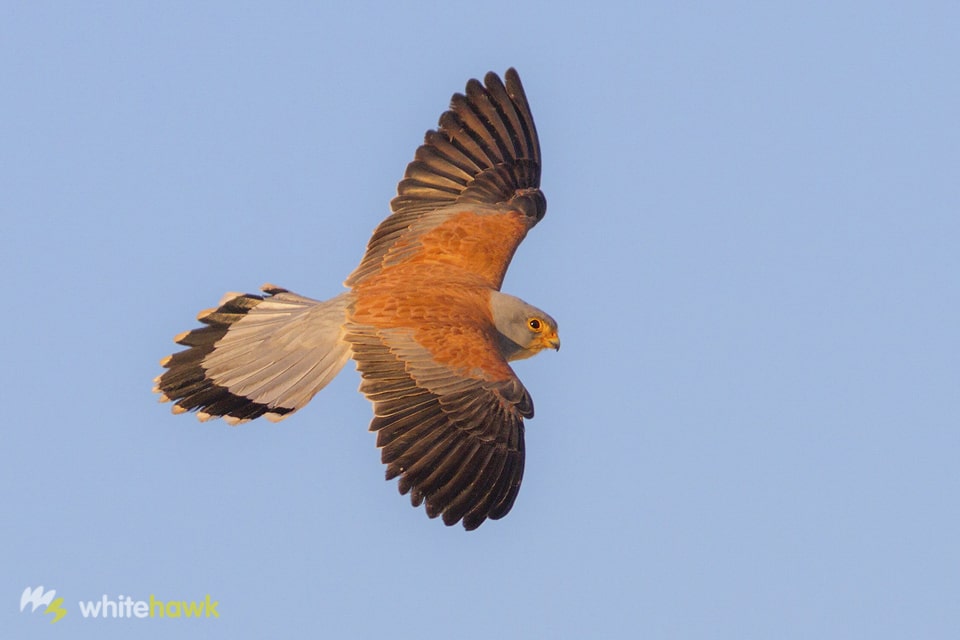
As they do every year, the Tumbabuey banding crew arrived in the village of Los Barrios, in Campo de Gibraltar, right on time to band kestrel chicks. This town, in the province of Cadiz, southern Spain, is home to one of the most important colonies of Lesser Kestrel (Falco naumanni). This small colonial falcon saw their numbers dwindling in the last century, to the point of becoming endangered. Fortunately, conservation efforts by many organizations and individuals have been successful and the species was removed from the endangered species list in 2011. Banding Lesser Kestrels in Cadiz has contributed to the conservation of this species.
Banding the Kestrel Chicks
Thanks to the Parish of San Isidro Labrador, we have access to the nest boxes that were placed on the roof to facilitate Lesser Kestrel nesting in Los Barrios. Banding the young here is a relatively simple task, but it requires good planning and coordination on the part of the team in order to do it as quickly and as effectively as possible. This lets the parents, who wait, suspended above us in circles, talons laden prey, to return as soon as possible to their young and feed them calmly.
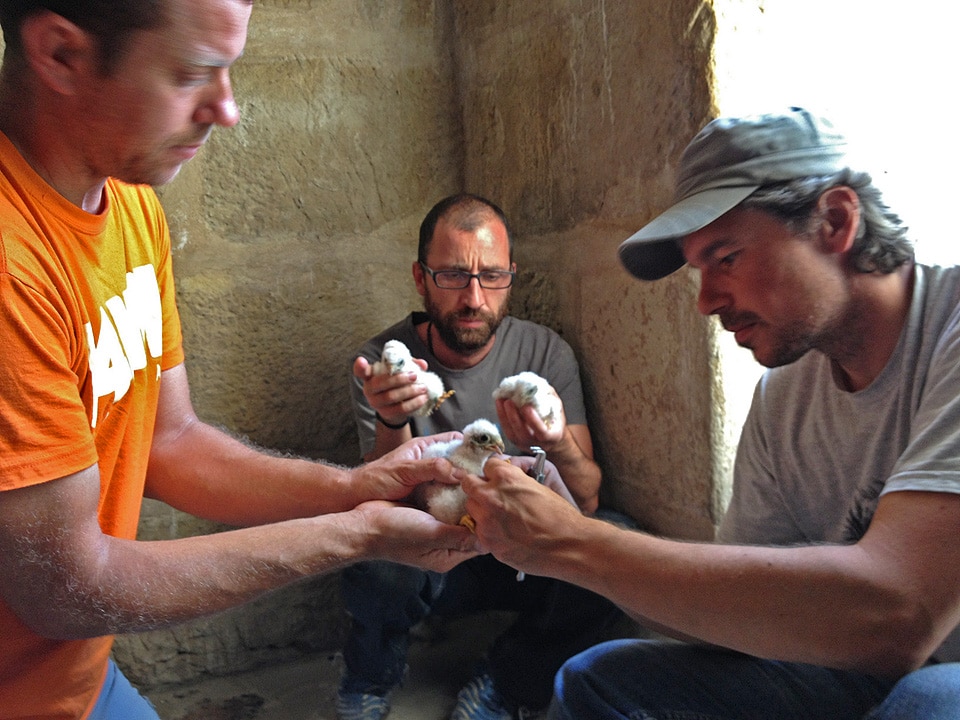
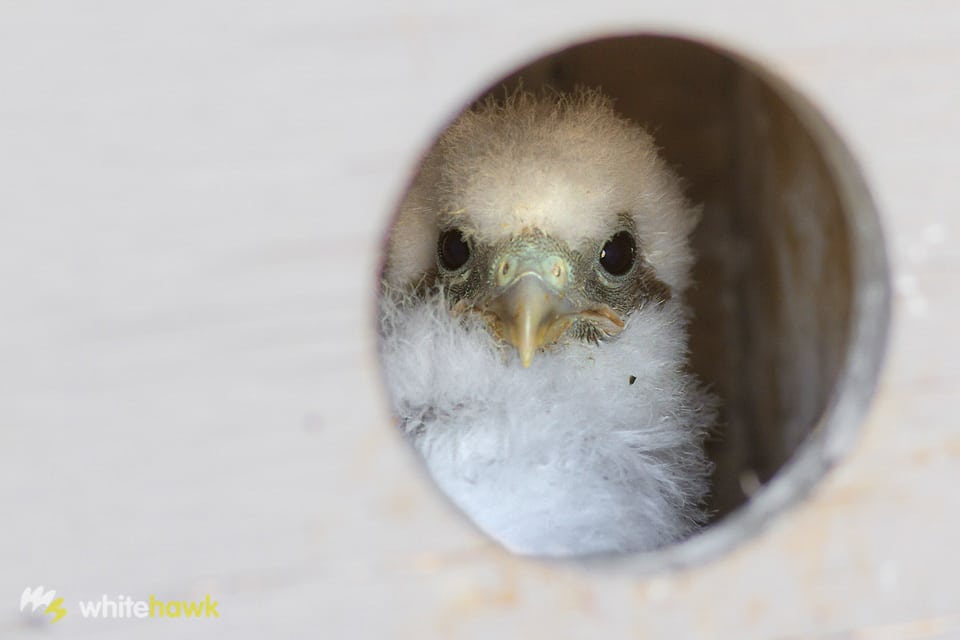
As usual, the procedure consists of putting one metal and one plastic band on the birds’ legs. Each band has a unique alpha/numeric code used to identify individual birds. With these codes, we can track long-term population trends including rates of return by age and sex, nest and pair fidelity, and age of first reproduction. Thanks to advances in digital photography, nowadays it is possible to take pictures of birds in flight and “read” the bands. This way we can record their presence in the colony. In a blog post we talked about how important the role of professional and amateur photographers in the study and conservation of birds can be.
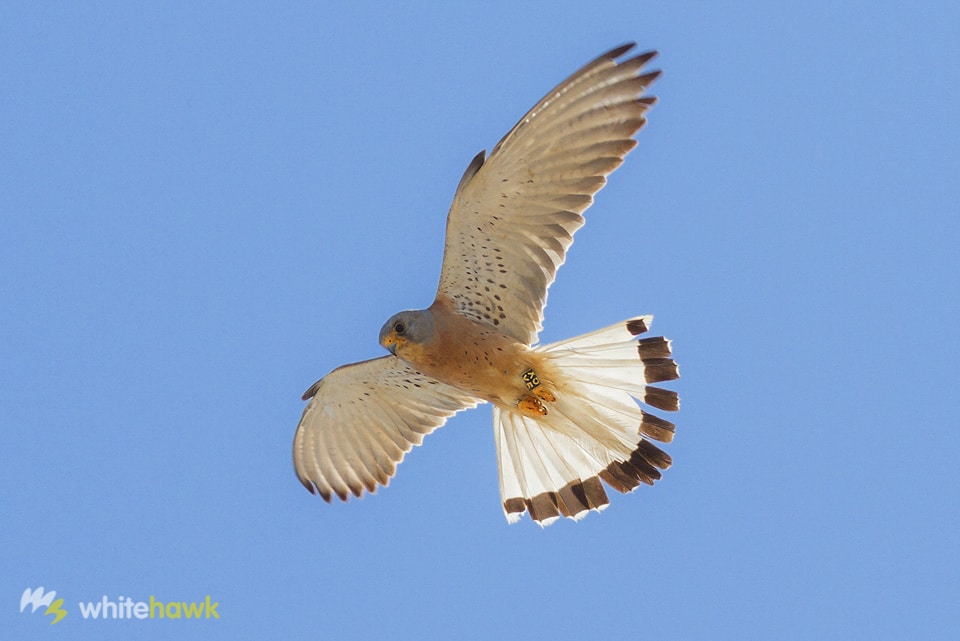
Another aspect of the crew’s job is to inspect the kestrel nest boxes to see what kind of food remains have been left. Lesser Kestrels eat primarily grasshoppers, beetles and mice. It is interesting to note that some pairs or individuals specialize in the collection of a certain type of prey. This may be related to their hunting grounds, or perhaps the size of the parents and even the stage of development of the offspring.
Local Outreach by Banding Kestrels
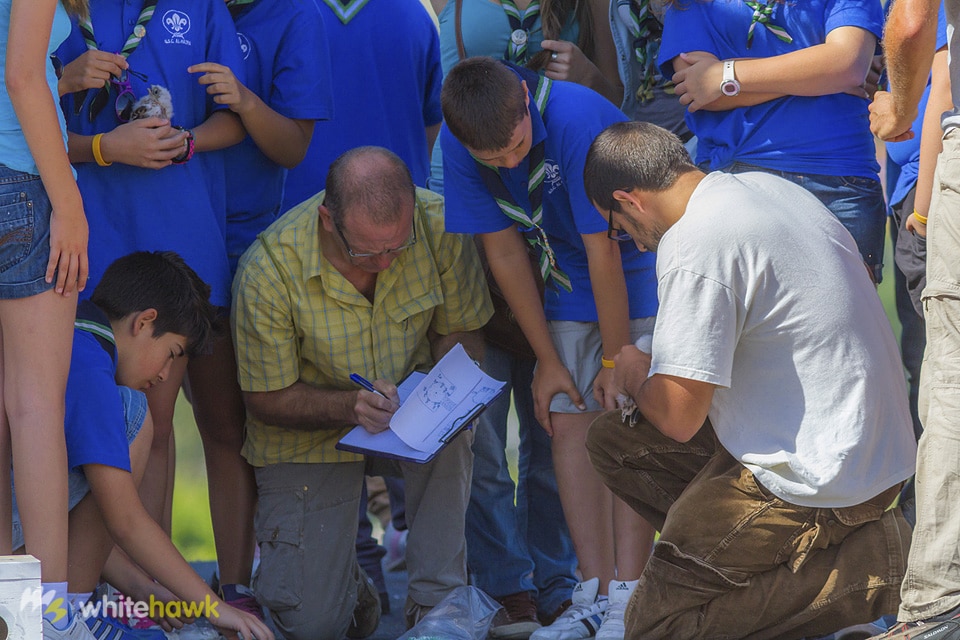
These efforts also serve as fantastic tools to develop environmental education strategies. Last year we were fortunate to share the day with a group of Boy Scouts who, as they passed a fun time at the top of the church, learned about the Lesser Kestrel, the banding efforts, and the importance of valuing our natural resources. It was definitely a great experience for the kids! They probably went home and told their parents how it felt to hold a kestrel in their hands, or how beneficial raptors are to farmers, since they hunt rodents and insects. Surely more than one parent learned something that day about the environment we live in through their children and learned to appreciate the natural fascination that birds instill in those lucky enough to spend time in their company.
Banding Lesser Kestrels has overall enriched our knowledge the species and engaged the local community to become involved in their conservation.

